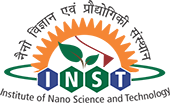The local chemical environment of the [2Fe–2S] cofactor hosted by ferredoxin and Rieske-type proteins is fundamentally different due to the presence of distinct ligands at the two iron centers in the case of Rieske proteins, whereas they are identical in ferredoxins. This renders Rieske [2Fe–2S] cores chemically asymmetric and results in more complex vibrational spectra as compared to ferredoxin. Likewise, one would expect other properties, for instance the dynamics of the magnetic exchange coupling constant J, to be also more complex. Applying ab initio molecular dynamics using our recently introduced spin-constrained two-determinant extended broken symmetry (CEBS) approach to Rieske and ferredoxin model complexes at 300 K, we extract the molecular fluctuations and the resulting magnetostructural cross-correlations involving the antiferromagnetic exchange interaction J(t). This analysis demonstrates that the details of the magnetostructural dynamics are indeed distinctly different for Rieske and ferredoxin cofactors, while the time averages of 〈J〉 are shown to be essentially identical. In particular, the frequency window between about 200 and 350 cm−1, is a “fingerprint region” that allows one to distinguish chemically asymmetric from symmetric cofactors and thus Rieske proteins from ferredoxins.


Recent Comments
Hello world!
A WordPress CommenterInterdum luctus accu samus habitant error nostra nostrum
Fletch SkinnerInterdum luctus accu samus habitant error nostra nostrum
Chauffina CarrDoloremque velit sapien labore eius lopren itna
Hans DownBloke cracking goal the full monty get stuffed mate posh.
Fletch Skinner